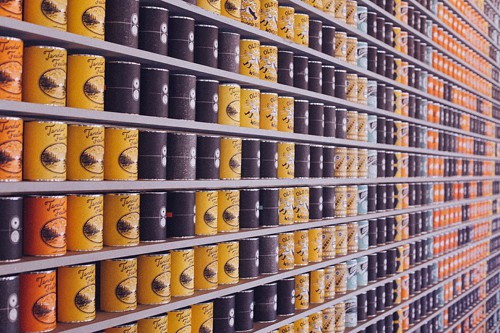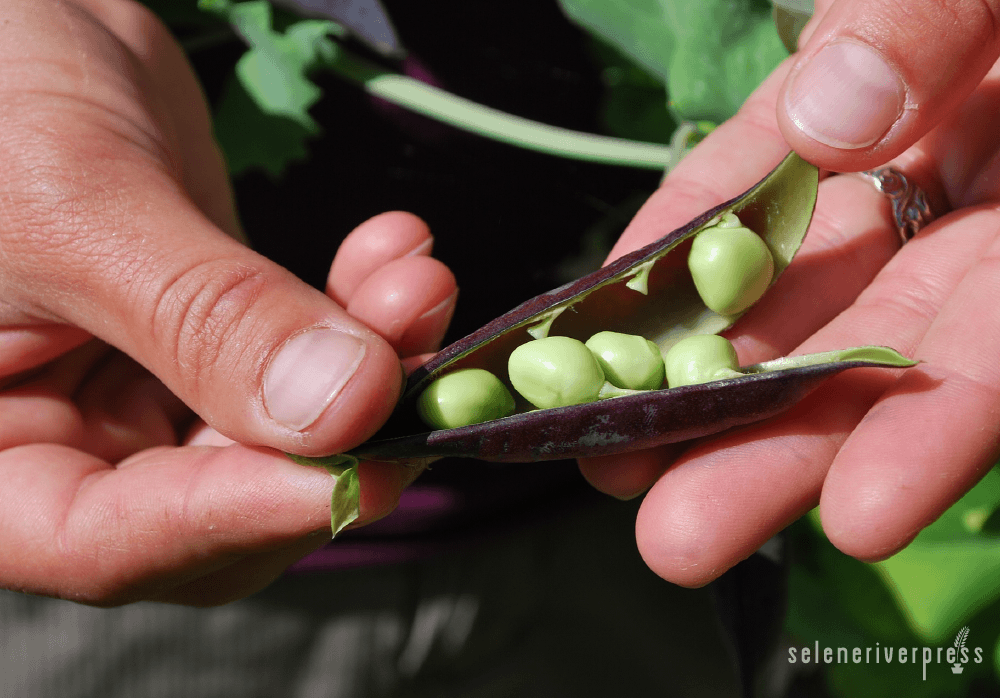My mother-in-law, Sarah McSherry, was the first of my real food muses. She introduced me to a consciousness of healthy eating. A Southern belle who grew up on a plantation in the rich, fertile soils of the Louisiana Delta and raised her four children amidst farm crops (and cotton herbicides no doubt), she was a disciple of nutritionist Adelle Davis and vitamin C. Sarah fed her family only farm-fresh vegetables, farm-raised beef, and locally harvested wild ducks and venison. She wouldn’t allow white sugar or processed foods in the house. I can’t imagine that she wasn’t also a follower of Dr. Royal Lee, one of the greatest nutritionists of the 20th century.
My own mother, Ann Lawrence, also was raised in Louisiana, where backyard chickens landed in large, steaming pots of fresh okra gumbo, and seafood fresh off the boat from the unpolluted waters of the Gulf of Mexico was readily available at our local markets. In my early childhood, red snapper or boiled shrimp were on our table weekly. But, like many in her generation raising kids in the 1950s and ’60s, my mother eventually was won over by television commercials promoting processed cereals, chips, crackers, soft drinks, ice cream, and, heaven forbid, TV dinners. The post-Depression food conglomerates were adept at convincing housewives that canned and frozen food was not only better but would also make their lives easier.
Canned pork and beans, frozen fish sticks, and boxed macaroni and cheese became my favorites. Processed crinkled french fries, far removed from real potatoes that smelled like earth and had dirt on them, became a snack I loved to serve my teenage girlfriends at slumber parties. After school, my mother made her grammar-school aged children “bread and butter and sugar” sandwiches as a snack—this treat was made from mass produced white bread, margarine, and white sugar. Yikes!
By the time I met Sarah McSherry in my 20s, I’d experienced a childhood filled with allergies and frequent bronchial infections. I was quickly won over to her holistic food ideas, even before the advent of “health food” stores. I learned to make whole wheat bread and brown rice and moved out of the center aisles of the grocery store into the fresh produce sections. Though I thank my mother for much, including memories of her gumbo and homemade fried chicken with mashed potatoes and gravy and smothered greens, it was Sarah who launched me into an adulthood of studying vitamins, “real” foods, and healthy living.
I wish I would have been privy at the time to Dr. Lee and his education on the health dangers brought on by industrially produced processed foods.
I now understand more about the benefits of “real” food, fresh air, sunshine, and exercise. I’ve embraced walking and other forms of exercise—preferably outside—and have expanded my studies to include yoga, Pilates, and dressage, the highest form of classical horseback riding. Dressage takes a great deal of core strength to “become one with your horse.” It’s like dancing, and it has become my impetus to practice yoga and Pilates so I’ll be fit enough to ride as I age. As my Pilates teacher, Jeff Woodman, reminds me, “Motion is lotion.”
 Especially now that I’ve entered my aging baby boomer era, I understand and appreciate the benefits of such disciplines, which support flexibility and balance, both key to aging in health and grace. I now believe that walking is essential to health and that Pilates and yoga build strength and balance, which can help prevent falling. I’ve also become a believer in rolfing and other alternative modalities like acupuncture and chiropractic, and I’m grateful every day for all the amazing practitioners in my life who support my efforts to stay healthy. Meditation and integration of body, mind, and soul are, for me, synonymous with happiness and well-being.
Especially now that I’ve entered my aging baby boomer era, I understand and appreciate the benefits of such disciplines, which support flexibility and balance, both key to aging in health and grace. I now believe that walking is essential to health and that Pilates and yoga build strength and balance, which can help prevent falling. I’ve also become a believer in rolfing and other alternative modalities like acupuncture and chiropractic, and I’m grateful every day for all the amazing practitioners in my life who support my efforts to stay healthy. Meditation and integration of body, mind, and soul are, for me, synonymous with happiness and well-being.
I’ve become more zealous about these concepts and the holistic approach to health after seeing for myself how some of my sicknesses from childhood and young adulthood are way more manageable when I eat right and keep my body fit. Because nutrition has dramatically improved my own health, I want to learn more and help others improve their health. Trust me, I have more energy eating multigrain bread baked with organic flour than I did as a child eating my mother’s well-intentioned “bread and butter and sugar sandwiches.”
I met Stephanie Anderson of Selene River Press and Mark Anderson of Standard Process West through my rolfer, Elizabeth Swenson. I’m thrilled to learn more about their products and businesses, and I’m delighted to join the SRP website through this blog. Through my writing, which has been a passion as well as my vocation, I hope to reminisce and sort through old ways of eating and living. I want to process my thoughts about all the many options available to us these days to improve our quality of life through food and healthy living.
Through this blog, Real Food Muse, I want to learn more about what, exactly, makes food “real.” And I want to share what I find with you. What are the differences between nutritious food and processed food? Why is processed food bad for us, and what are some ways we can avoid it? Why are we healthier when we eat the right kinds of food? What makes what we eat healthy? How does soil impact the food we eat? How can we access healthy foods? Can we grow it ourselves, even on a small scale, on small acreages, in our backyards, or on our patios? What are some tips for raising healthy food for an average person living an average lifestyle? I want to research the answers to these and other questions. I want to provide tips for growing and cooking as well as recipes for delectable and healthy dishes.
There’s a wealth of knowledge from Dr. Lee, the legendary pioneer in nutritional research and education and the “father of holistic nutrition,” in the SRP Historical Archives. SRP also publishes amazing books. I’m ready to devour and share. I want to inspire others to follow the path of Dr. Lee, a forerunner in this field, who basically started the organic movement. Let’s take a look at some of the societal and cultural changes that evolved from his efforts: health food stores, public demand for organic agriculture, holistic practitioners, and the push to eat organic, eat local, and eat fresh. Let’s grow and cook and eat real food and learn about it together.
In 1943, Dr. Lee said, “The American people have been humbugged into digging their graves with their own teeth.” As my old mentor Adelle Davis said, “You are what you eat.” Real Food Muse will explore a path of growing, cooking, and eating food that leads to health. I look forward to chatting with you about these topics.
 Get self-health education, nutrition resources, and a FREE copy of A Terrible Ten: Health Foods That Ain't ebook.
Get self-health education, nutrition resources, and a FREE copy of A Terrible Ten: Health Foods That Ain't ebook.

Excellent blog post, Julia. I always feel better when I eat “real” food, but it’s hard to resist the temptation of the bad stuff sometimes (especially after a taxing day). I look forward to your future posts, especially the tips and recipes.
Ah, the food lessons we learn – or don’t learn – in childhood. My mother was a very average cook who got caught up in those 1950s-1960s food “innovations” like frozen fish sticks (which I loved) and boxed mac and cheese. Her idea of “salad” was potato salad or those questionable concoctions of fruit and Jello. Don’t recall ever having any real greens in my childhood, and was pleasantly surprised, in my twenties, to discover spinach and chard were delicious.
It was also my New Orleans native mother-in-law who introduced me to the wonders of Creole and Cajun cooking. My in-laws, and the extraordinary food and cooking culture of south Louisiana, imprinted on me immediately the widely held concept that “We don’t eat to live, we live to eat.” These wonderful influences made me the cook and foodie that I am today.
Thanks, Tracy, I love that quote. It reminds me of how much I love to live to eat. Watch for a new blog on healthy eating soon.
Thanks, Ray, I know what you mean sometimes about resisting the temptation of the “bad” stuff, food that is not so good for us. But once we get in the habit of eating “real food”, it gets easier to not go back! Tips and recipes coming soon!